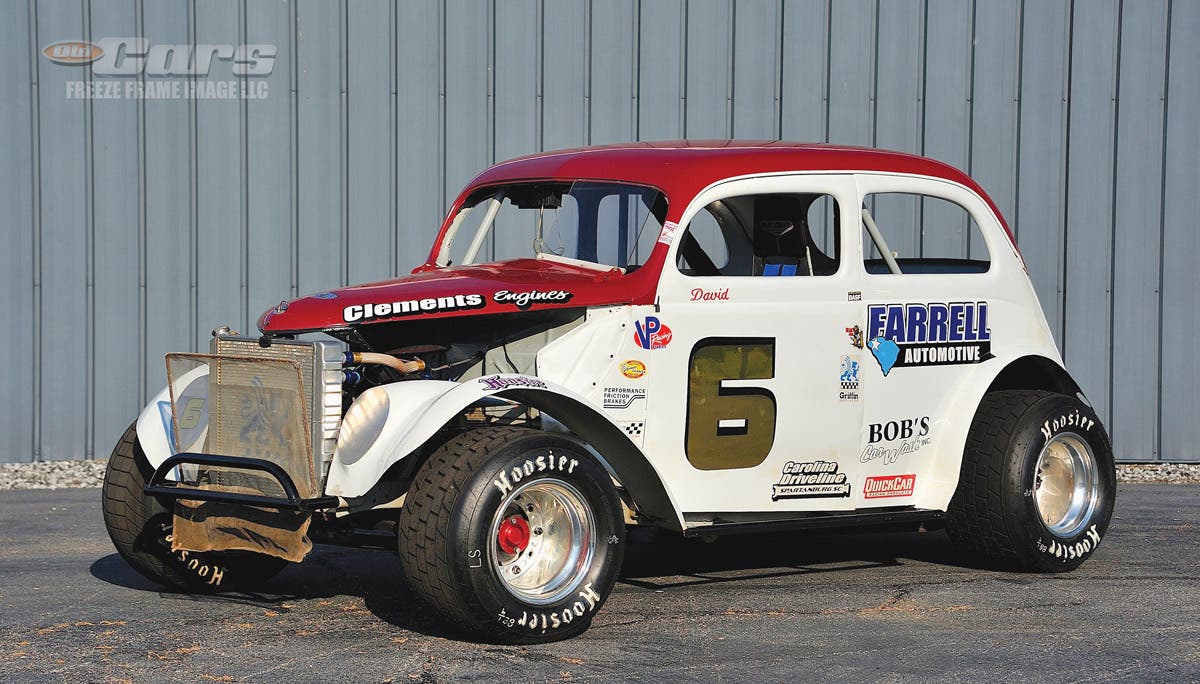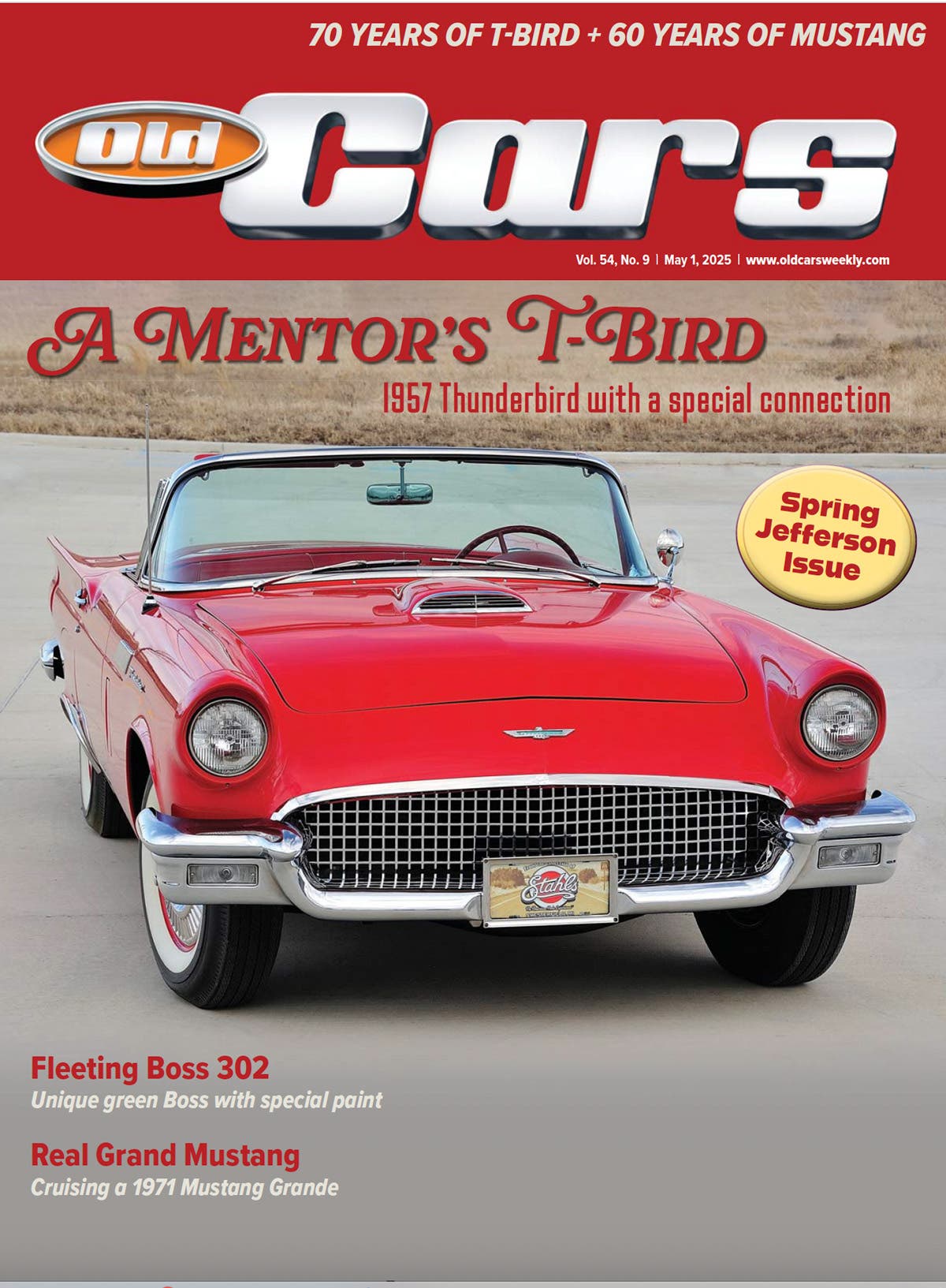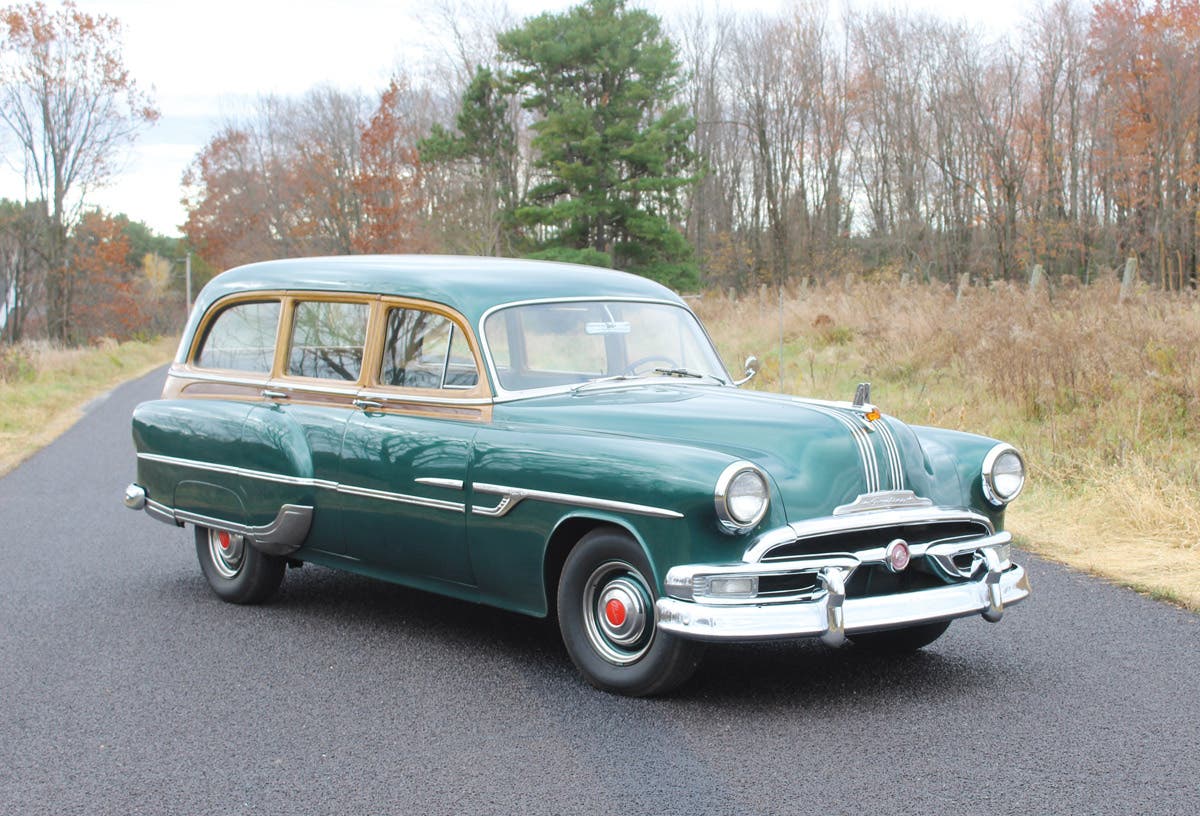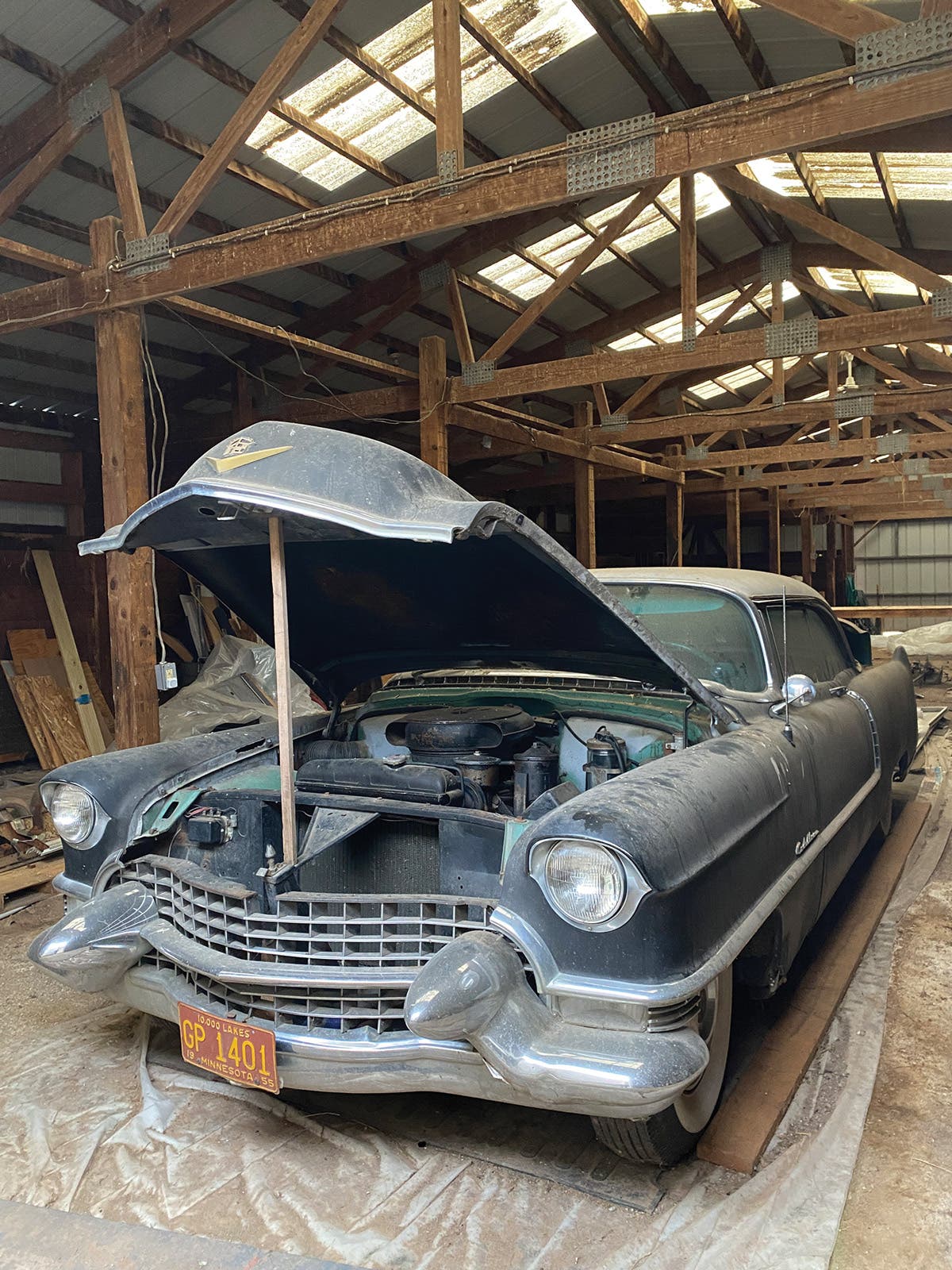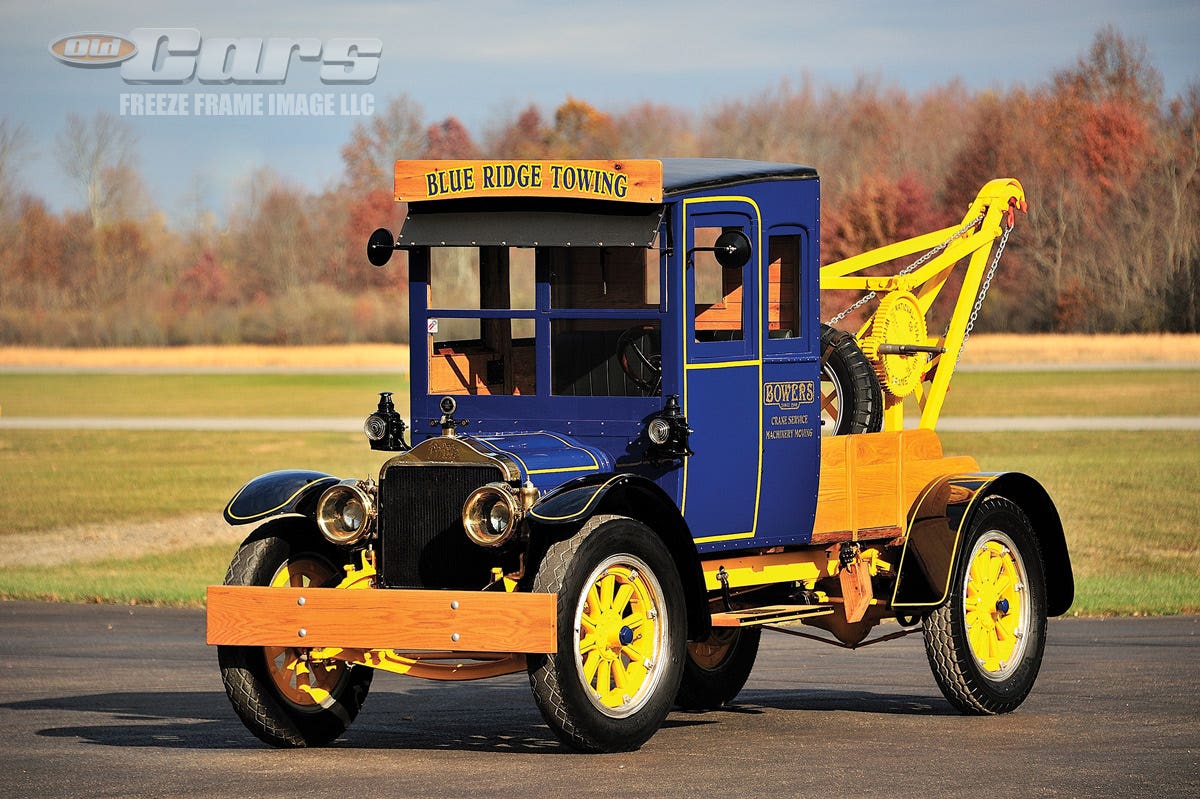The words "all-new" is an overused automotive term, most often incorrectly applied to warmed-over new models. Fifty years ago, it really meant something when attached to the just-introduced 1958 Chevrolet passenger cars.
They had all-new body, chassis, rear suspension and steering designs. Model lineups were redone, and there even was a new V-8 engine thrown in for good measure.
For 1958, the new Delray series replaced the old One-Fifty lineup. Although it was the bottom of the Chevrolet offerings, this Delray two-door sedan sports wide whitewall tires and full wheel covers.
While the 1957 Chevrolets today are considered all-time classics, back in 1957, they were on the third year of a styling cycle and had to compete with all-new 1957 Fords and Plymouths. Ford scored a rare victory in model-year sales, and something had to be done.
While its two main competitors were warmed over for 1958, Chevrolet brought a near totally redone lineup of passenger cars.
Bodies were completely restyled and were mounted on a new "Safety-Girder" frame, which featured X-type construction with three cross members and a center tube. Rear suspension design changed from traditional leaf springing to coils with three control arms. Up front, there was new steering with a jointed steering shaft and steering pieces ahead of the front wheels.
The star of the 1958 Chevrolet lineup was the Bel Air Impala convertible, the perfect car to take to a private picnic. This example is decked out with a continental kit and fender skirts.
New bodies and underpinnings all resulted in a longer, lower and wider package that, on the average, was 150 pounds heaver. Wheelbase grew from 115 to 117.5 inches; overall length grew from around 200 to 209.1 inches. Width ballooned from 73.7 to 77.5 inches. Height dropped, depending on the model, nearly four inches to just over 56. The X-frame permitted the reduced height without loss of passenger room. Quad headlamps were standard for the first time on a Chevrolet production car.
A new lineup added to the excitement. Stars of the show were the Bel Air Impala two-door hardtop and convertible. Hardtops featured styling cues from the 1956 Chevrolet Motorama Impala dream car with reverse-angle rear window pillars and a simulated rear roof vent. There were also simulated vents on the rear quarter panels, six taillamps, an interior with three-tone seat inserts, reflectors in the extended armrests and, in hardtops, a pull-up center armrest in the middle of the back seat, among other standout features.
The mid-level Chevrolet for '58 was the Biscayne series. The line included only four-door sedans and two-door sedans, like the two-tone example here.
However, Impalas were only part of the Bel Air stable. There was also a more conventional Sport Coupe (two-door hardtop), Sport Sedan (four-door hardtop) plus two- and four-door sedans.
Replacing the Two-Ten mid-range series was the Biscayne, taking a name from the 1955 Chevy dream car, a four-door hardtop. However, there were no hardtop Biscaynes this time around, ending a Chevy mid-range tradition. Only two- and four-door sedans were offered.
Holding down the bottom rung replacing the One-Fifty was the Delray series, its name coming from a fancy version of Two-Ten two-door sedans of past years. Two- and four-door sedans resided here, plus a business coupe.
The Bel Air Sport Sedan four-door hardtop was a fine-looking car with plenty of top-of-the-line bright trim. Only the Bel Air line offered a pillarless four-door.
Station wagons were given their own series for 1958, not carrying the same series designations of the other models as in the past. At the top was the Nomad, but stylish two-doors of the past were just a memory. A pillared four-door, six passenger wagon now carried the name that began on a 1954 Corvette-styled dream car. Nomads were equal to Bel Airs in trim level.
Patterned after Biscaynes were Brookwoods, in four-door six- and nine-passenger versions. Yeoman carried the new designation for the lower-priced wagons. Two- and four-door models were offered, all carrying six passengers.
One of the few areas where major carryover components were used was in the engine compartment.
Back again was the traditional Blue-Flame 235.5-cid six and 283 Turbo-Fire V-8. However, a third design joined the lineup, the Turbo-Thrust 348-cid V-8. More on that in a minute.
A compression ratio kicked the Blue Flame's horsepower up five to 145. The original small-block 265 V-8 was gone for 1958 and replaced as the standard V-8 by the 185-horsepower Turbo-Fire with 8.5:1 compression and a two-barrel carburetor.
Next up came the Super Turbo-Fire 283 with a four-barrel and 9.5:1 compression, with a rating of 230 horsepower. Ramjet Fuel Injection came next at 250 horsepower and 9.5:1. Though not heavily advertised, you could obtain the Corvette fuel-injection unit at 290 horses, hot cam, solid lifters and 10.5 squeeze.
It was common knowledge that bigger cubes would be needed for 1958, as Ford would have a new 352 and Plymouth 350 with bigger blocks.
Expanding the 283 to that size would be years away, so Chevy drew on a truck engine it had under design, the W-engine. At 348 cubic inches, it was right in the ballpark. Slightly larger than the 283, it weighed about 100 pounds more. Among its features were combustion chambers in the block and inverted W-shaped heads. The Turbo-Thrust was rather mild with hydraulic lifters, mild cam and 9.5:1 compression. With a single four-barrel carb, rating came in at 250 horsepower. Triple two-barrel Rochesters boosted the advertised rating to 280.
Domestic automobile manufacturers agreed to stop participating in racing and cut back on new performance engines, and Chevrolet division followed most of the edict. However, under the guise of law enforcement development, a mid-year 348 option was released, with solid lifters, 11:1 compression, triple two-barrels and 315 advertised horsepower.
With no factory backing, most Chevrolet stock car racers chose to stick with the 1957 models, the 1958s being too big and two different. There were some 1958 models raced that season, however.
With a purpose of retaking the industry sales lead, 1958 Chevrolets sold less than their less-than-popular 1957 counterparts, but wait, there's more. It turned out that 1958 was a recession year, and though Chevrolet model-year production dropped from just over 1.5 million to north of 1.2 million, Ford dived to less than a million, giving Chevrolet the crown big time.
As it turned out, 1958 Chevrolets were one-year wonders. Reacting to the radical 1957 Chrysler Corp. styling, GM went all-new across the board for the 1959 model year ' at least as bodies went.
It took a while for the automotive world to appreciate the 1958 Chevrolets, as among collectors and racers, they lived in the shadow of the 1955-'57 models for many years. However, customizers warmed to the first Impalas right from the start. Restorers and collectors eventually followed.
Even young Chevy enthusiasts were attracted to the 1958 models early, as t hat was the year the popular 3-in-1 AMT/SMP 1:25 plastic customizing kits hit the market, using the basic promo dies with custom and racing parts and decals in the kit. Both the Impala convertible and hardtop models were offered. Since then, 1958 Chevy Impalas have been a staple of the model car field.
Interested in learning more about this car?
The Standard Catalog of 1950s Chevrolet fom Krause Press leads you through one of the most innovative eras of automobile engineering. A perfect coupling of technical and production details with rich nostalgia, this book helps all of you Chevy enthusiasts determine your favorite models. Whether collector, car buff or restorer this book is must-have because it:
- Offers a full price guide to '50s Chevy cars to aid in purchases or sales
- Shows the beauty and top-quality craftsmanship of Chevrolet in more than 300 exquisite color photos
- Explores performance capabilities in easy-to-understand reports.



